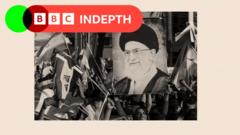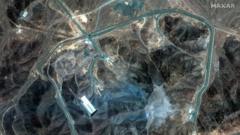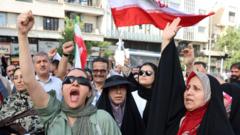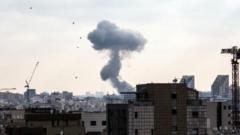Operation Midnight Hammer saw the US execute a multi-phase military operation against Iran’s nuclear infrastructure, employing misleading decoy flights, advanced bunker-buster bombs, and a coordinated strategy that caught Iranian defenses off-guard. The true long-term impact of these strikes remains uncertain.
Operation Midnight Hammer: How the US Executed a Covert Strike on Iran's Nuclear Facilities

Operation Midnight Hammer: How the US Executed a Covert Strike on Iran's Nuclear Facilities
In a highly complex and secretive military mission, the United States successfully targeted Iran's nuclear sites using B-2 stealth bombers and advanced weaponry, amidst claims of total victory.
The details surrounding "Operation Midnight Hammer" have emerged, highlighting a meticulously orchestrated military operation targeting Iran's nuclear facilities. Four-star General Dan Caine, Chairman of the Joint Chiefs of Staff, disclosed that the mission involved an 18-hour flight with multiple mid-air refuelings and decoy missions to successfully ensure the strike's concealment from global observation.
The military operation commenced shortly after midnight when Secretary of Defense Pete Hegseth, accompanied by President Trump and key administration officials, monitored a fleet of bombers launching from Missouri's Whiteman Air Force Base. These B-2 stealth bombers, designed to evade radar detection, were outfitted with "bunker buster" bombs, essential for penetrating the fortified structure of Iran's underground nuclear facilities, notably Fordo.
Initially, reports from the Pentagon indicated that the bombers were deployed towards US territories in the Pacific as a strategic distraction. General Caine emphasized that this deception was known only to a select group of military leaders, allowing the true mission to unfold towards the east, directly into Iranian airspace with minimal communications, evading radar detection.
Once the aircraft reached the Middle East, they were supplemented with support planes to monitor potential threats. US officials noted that Iranian air defenses remained inactive, attributed to Israel's dominance in regional airspace, allowing the American bombers to execute their mission without interference. The operation, described by experts as unprecedented in its complexity, saw significant strategic planning behind its execution.
At approximately 17:00 EDT, US submarines launched over two dozen Tomahawk cruise missiles targeting the Isfahan nuclear site, coinciding with the bombers' assault on Fordo and Natanz, displaying an organized surprise attack across multiple fronts. General Caine reported that the lead bomber deployed two GBU-57 Massive Ordnance Penetrators (MOPs)—weapons specifically designed to breach deep underground installations—upon their arrival in Iran.
All told, the US military deployed around 75 precision-guided weapons and over 125 aircraft during this campaign. Conclusively, Secretary Hegseth proclaimed a decisive blow to Iran's nuclear capabilities. However, the extent of the damage inflicted and the operation's long-term implications for Iran's nuclear program remain uncertain, with experts suggesting that assessing the complete impact will take time and further investigations.
Dr. Stacie Pettyjohn, a defense expert, suggested that while the tactical operation was executed flawlessly, its efficiency in achieving lasting outcomes against Iran’s nuclear ambitions is questionable.





















